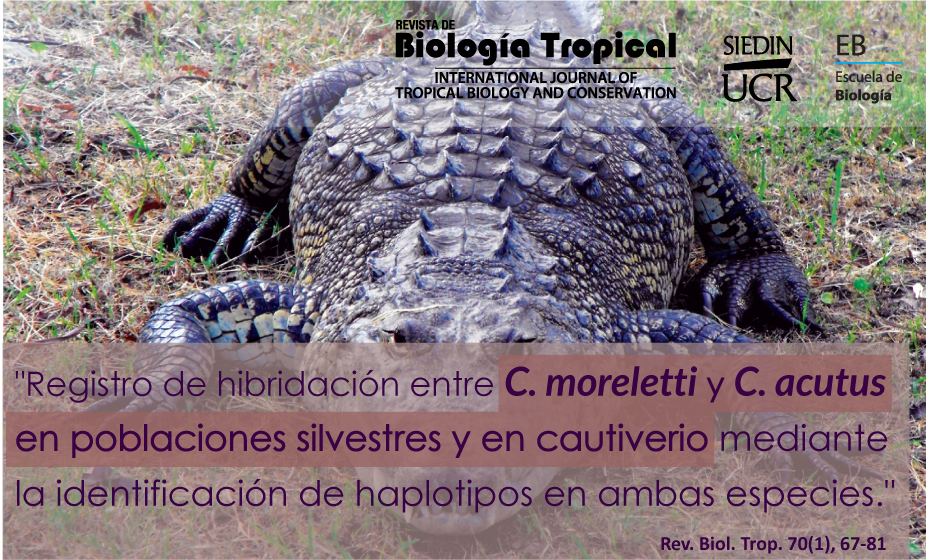Abstract
Introduction: There is low evidence of genetic diversity and hybridization processes within Crocodylus acutus and C. moreletii populations. Objetive: To evaluate genetic diversity and some phylogenetic relationships in wild and captive populations of C. acutus and C. moreletii using the Barcode of Life Data System (COX1, cytochrome C oxidase subunit 1 gene). Methods: 28 individuals phenotypically like C. acutus located in the state of Guerrero, Oaxaca and Quintana Roo were sampled, as well as animals belonging to C. moreletii located in the states of Tabasco, Campeche, and Quintana Roo. 641 base pairs of nucleotide sequence from COX1 were used to obtain the haplotype and nucleotide diversity per population, and a phylogenetic and network analysis was performed. Results: Evidence of hybridization was found by observing C. moreletti haplotypes in animals phenotypically determined as C. acutus, as well as C. acutus haplotypes in animals classified as C. moreletti. Low haplotypic diversity was observed for C. acutus (0.455 ± 0.123) and for C. moreletii (0.505 ± 0.158). A phylogenetic tree was obtained in which the sequences of C. acutus and C. moreletii were grouped into two well-defined clades. Organisms identified phenotypically as C. acutus but with C. moreletii genes were separated into a different clade within the clade of C. moreletii. Conclusions: There are reproductive individuals with haplotypes different from those of the species. This study provides a small but significant advance in the genetic knowledge of both crocodile species and the use of mitochondrial markers, which in this case, the COX1 gene allowed the detection of hybrid organisms in wild and captive populations. Conservation efforts for both species of crocodiles should prevent the crossing of both threatened species and should require the genetic identification of pure populations, to design effective conservation strategies considering the possibility of natural hybridization in areas of sympatry.
Palabras clave: ADN mitocondrial; citocromo C oxidasa; diversidad haplotípica; diversidad de nucleótidos; hibridación, Sistema de código de barras de la vida.
##plugins.facebook.comentarios##

This work is licensed under a Creative Commons Attribution 4.0 International License.
Copyright (c) 2022 Revista de Biología Tropical



